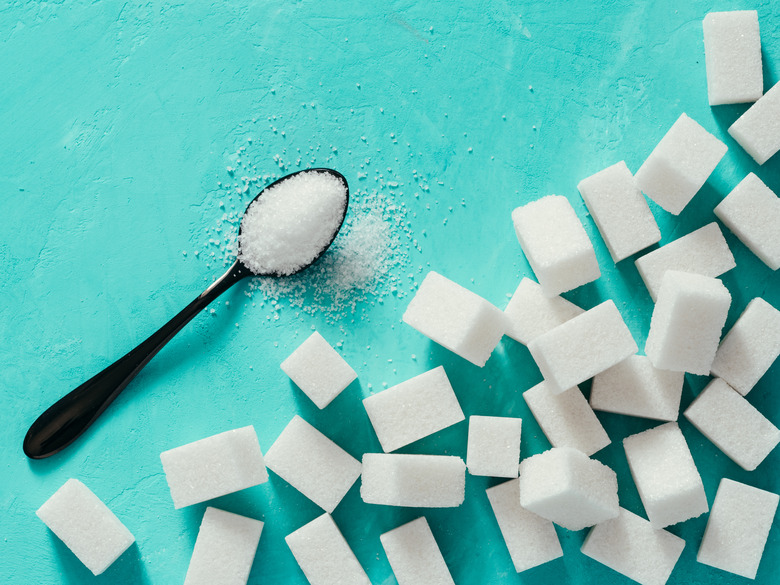How To Make A 20% Sugar Solution
Solutions can be measured by weight, volume or a combination of the two, but the most common is weight per volume. Unless instructions specify otherwise, you can usually assume that a 20 percent sugar solution means 20g of sugar, a measurement of weight, for every 100 milliliters of water, a measure of volume, especially if you're mixing the solution for use in biology or physiology. If you're unsure whether the liquid should be water or whether you should measure it by weight rather than volume, ask whoever requested the solution to be sure.
Step 1
Multiply .2 by the total milliliters of solution that you need, to calculate the number of grams of sugar. For example, for a 100 milliliter solution, you need 100 x .2 = 20 grams of sugar.
Step 2
Weigh out that amount of sugar on a scale. Be sure to account for the weight of any receptacle used to hold the sugar. For example, if you are pouring the sugar onto a piece of paper that weighs 2 grams, you will need to subtract that weight from the total shown on the scale.
Step 3
Pour the sugar into a container marked in milliliters.
Step 4
Add about two-thirds of the water you need and stir the solution with a stirring rod until the sugar is dissolved. Wait until the water stops moving, then gradually pour in more water until the solution reaches the mark beside the number of milliliters that you need. Stir it once more to finish mixing it.
Things Needed
- Scale
- Container marked in milliliters
- Stirring rod
Cite This Article
MLA
Thompson, David. "How To Make A 20% Sugar Solution" sciencing.com, https://www.sciencing.com/make-20-sugar-solution-7499631/. 25 April 2018.
APA
Thompson, David. (2018, April 25). How To Make A 20% Sugar Solution. sciencing.com. Retrieved from https://www.sciencing.com/make-20-sugar-solution-7499631/
Chicago
Thompson, David. How To Make A 20% Sugar Solution last modified March 24, 2022. https://www.sciencing.com/make-20-sugar-solution-7499631/
